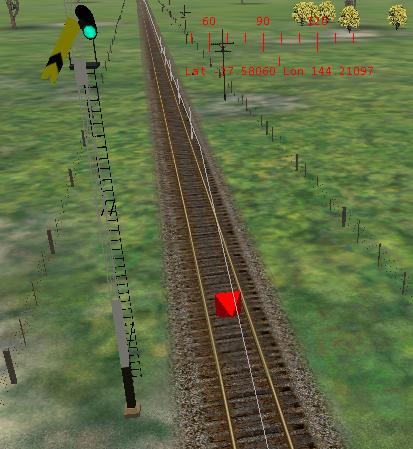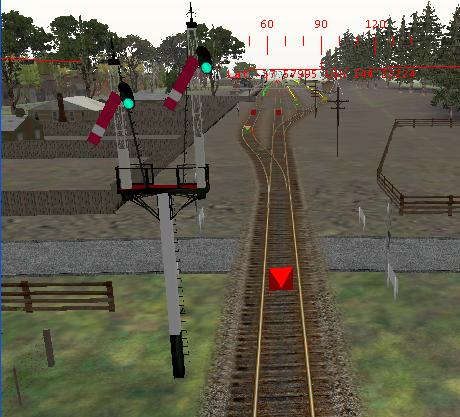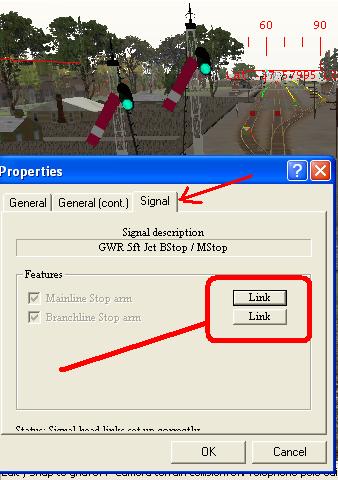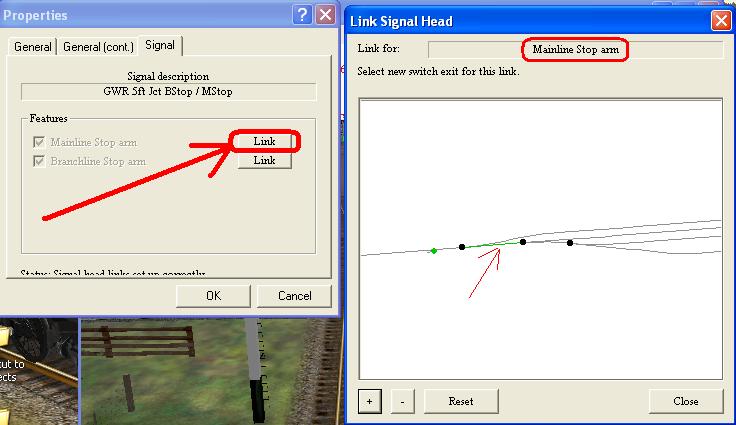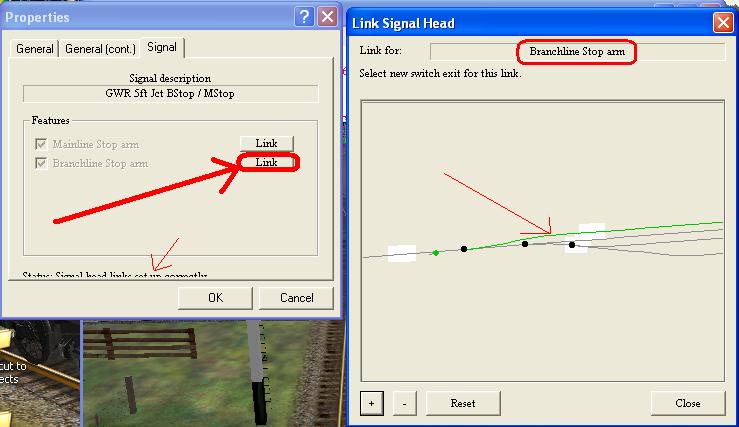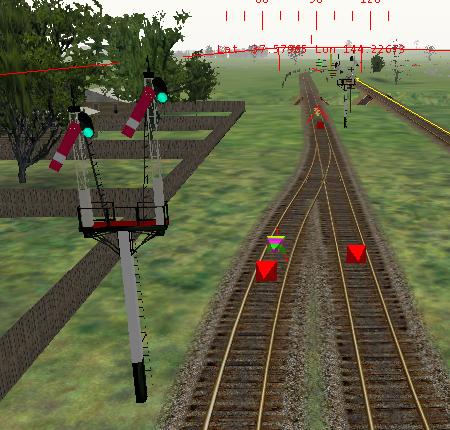Setting up Signals in MSTS - A Primer
by Russell Beer
General Rules in placing signals
- After placing signals do not alter the height of the terrain near the signals as the Route Editor may displace the signals and they will disappear causing problems with editing the route later;
- Avoid track database rebuilds as the linking function for junction signals will be lost resulting in you having to re link ALL the placed junction signals.
- Avoid placing the junction signals too close to the red point data base marker: ensure it is placed on the section of track or further in front of the points;
- Try to place signals after you have the track work done; you can get away with placing the signals earlier but try to keep well away from the point of work. I usually stay at least a couple of KMs from the end of the track that I am working on.


